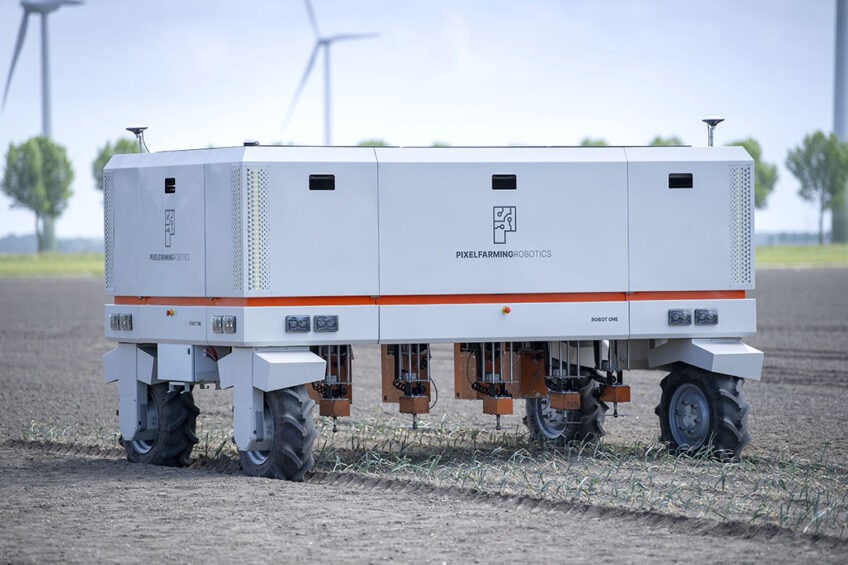New Robot One now utilizes laser technology

Pixelfarming Robotics showcased the latest version of their Robot One during a demonstration in the Netherlands. This new model features a lower height and larger wheelbase to enhance stability for various applications.
Under the surface, the technology remains the same. The lager wheelbase allows for the mounting of two rows of five robot arms with different tools weighing up to a maximum of one hundred kilograms, including those from external manufacturers. Fourteen 3D cameras positioned at the front and back of the robot can be trained to recognize plants. They also capture the work progress, enabling the monitoring and verification of the operations. Additionally, it is possible to record the GPS position of each plant.
The vertically rotating blade can cut large plants above the ground or just mill into the soil to root out weeds
Text continues below picture

Solar panels for a greener robot
The new Robot One weighs approximately 2,000 kg and is equipped with solar panels on the top, which charge the onboard lithium batteries. The maximum power output of the electric motors is 32 hp. The track width can be adjusted from 1.80 to 3.50 meters by rotating the wheels and changing the robot’s direction of travel. To combat weeds, users can choose from a range of tools, including mechanical options and now lasers.
Through the ‘Scan and Act’ feature, the robot can clean a stretch of crops up to one hundred meters long for experimentation before modifying the tools and treatment patterns. The targeted capacity is one hectare per hour.
Pixelfarming Robotics reports that they currently have seven individuals in their onboarding program, along with four Robot One vehicles, two for this year and two for 2024. The starting price for the Robot One is currently € 250,000. Opting for the laser tool is expected to cost an additional € 7,500 ($ 8,200) per unit.
Join 17,000+ subscribers
Subscribe to our newsletter to stay updated about all the need-to-know content in the agricultural sector, two times a week.



